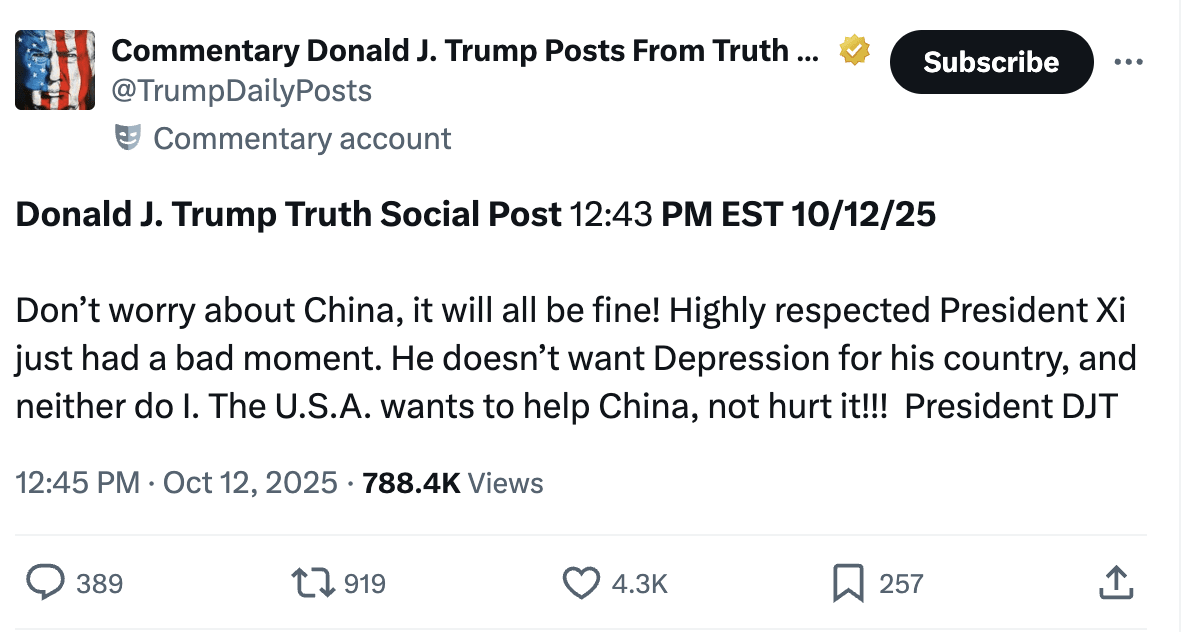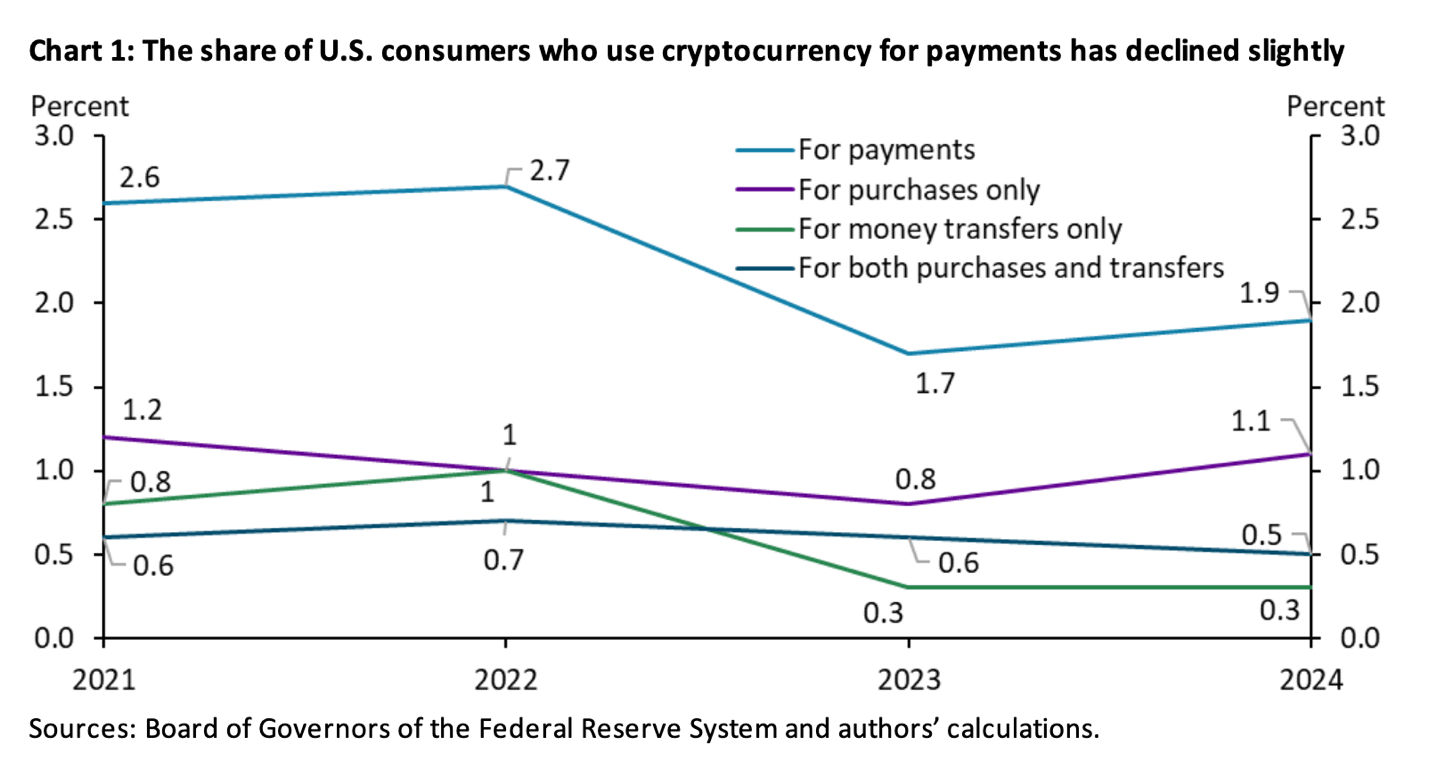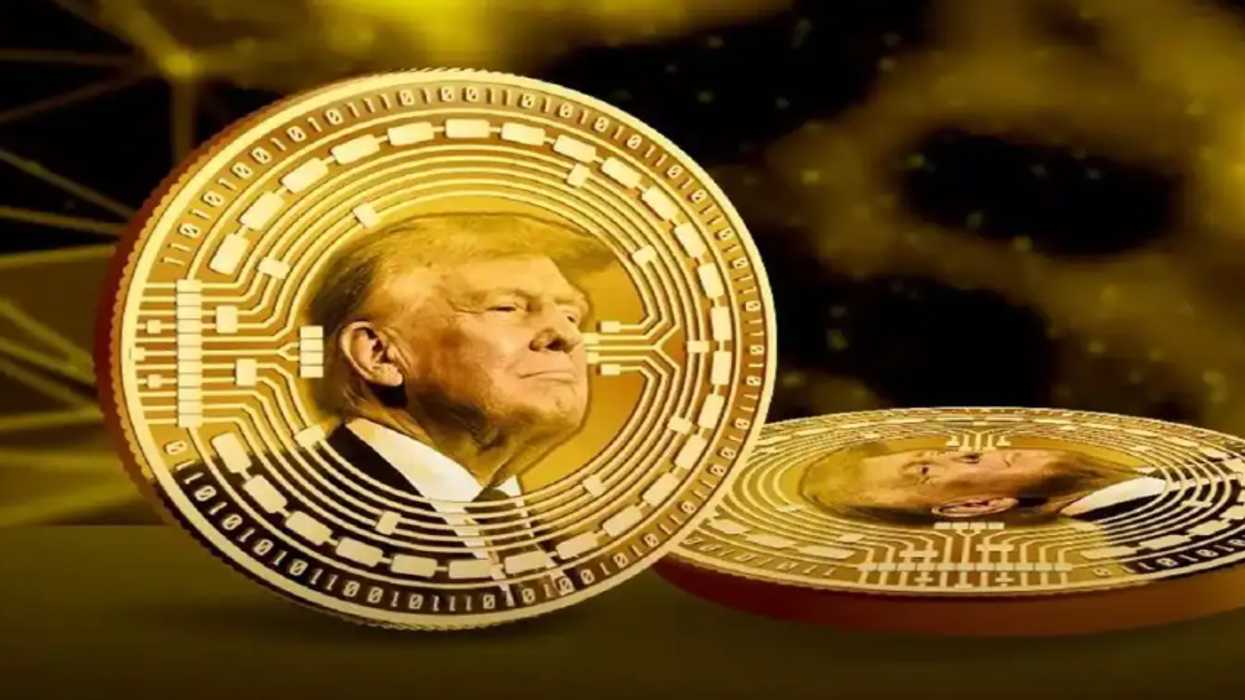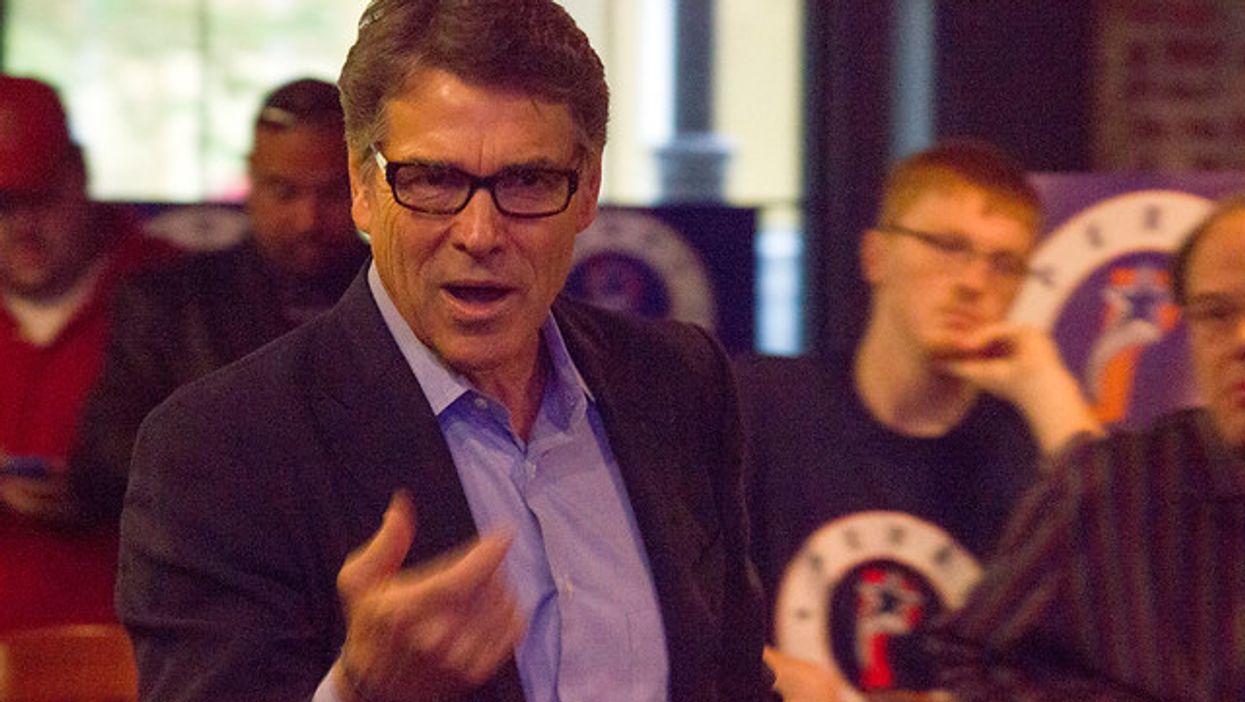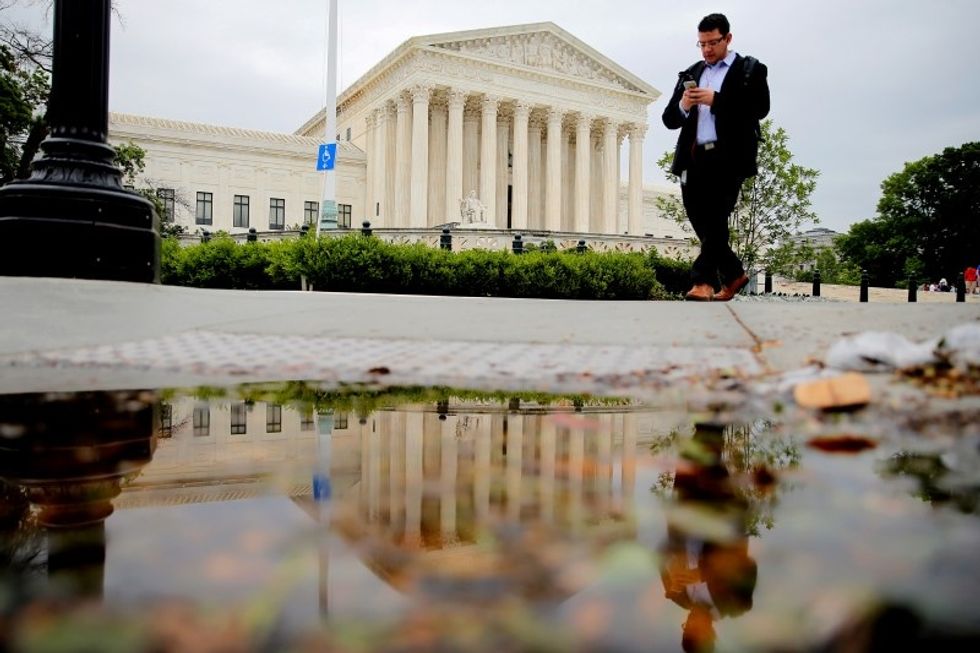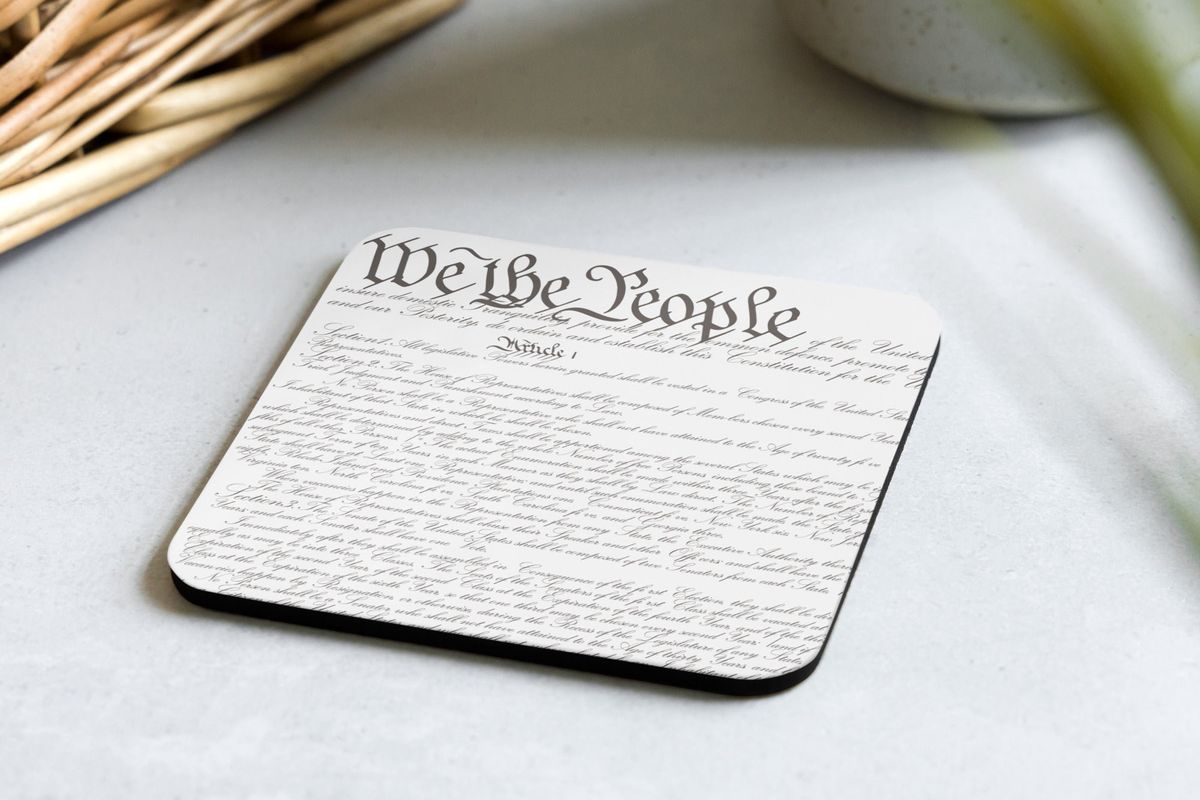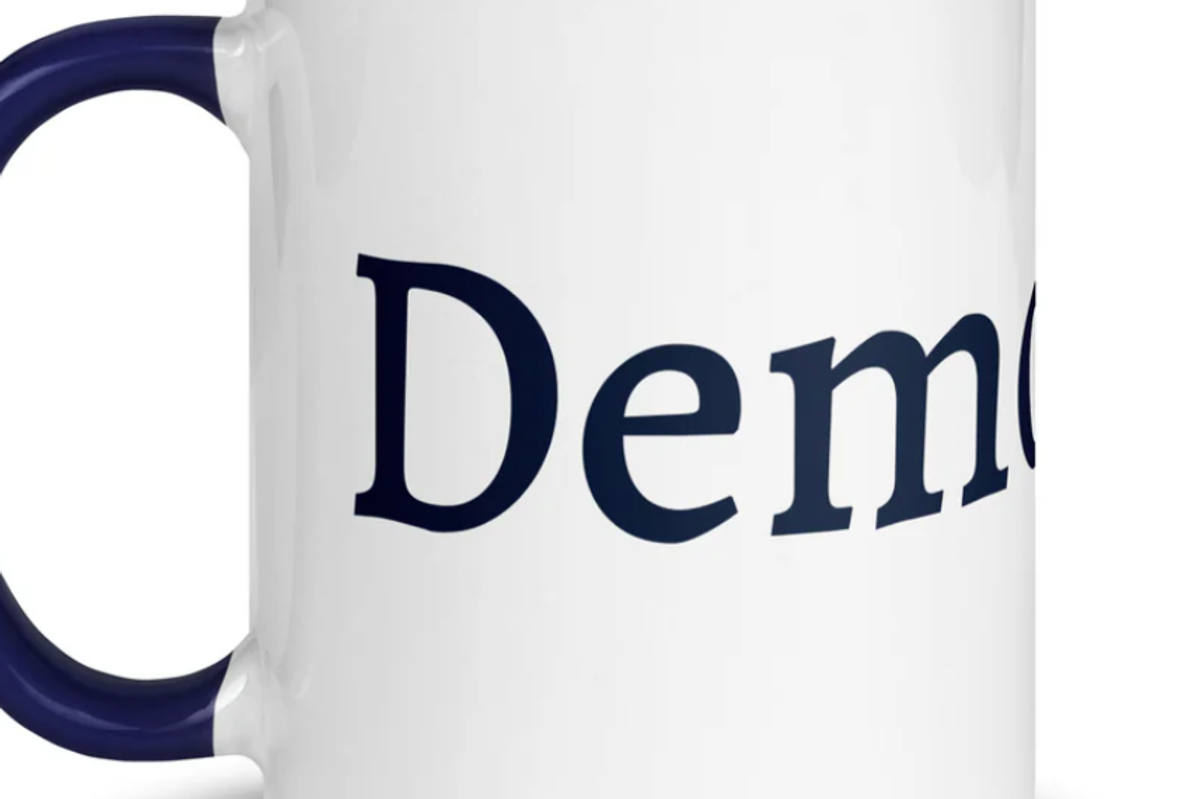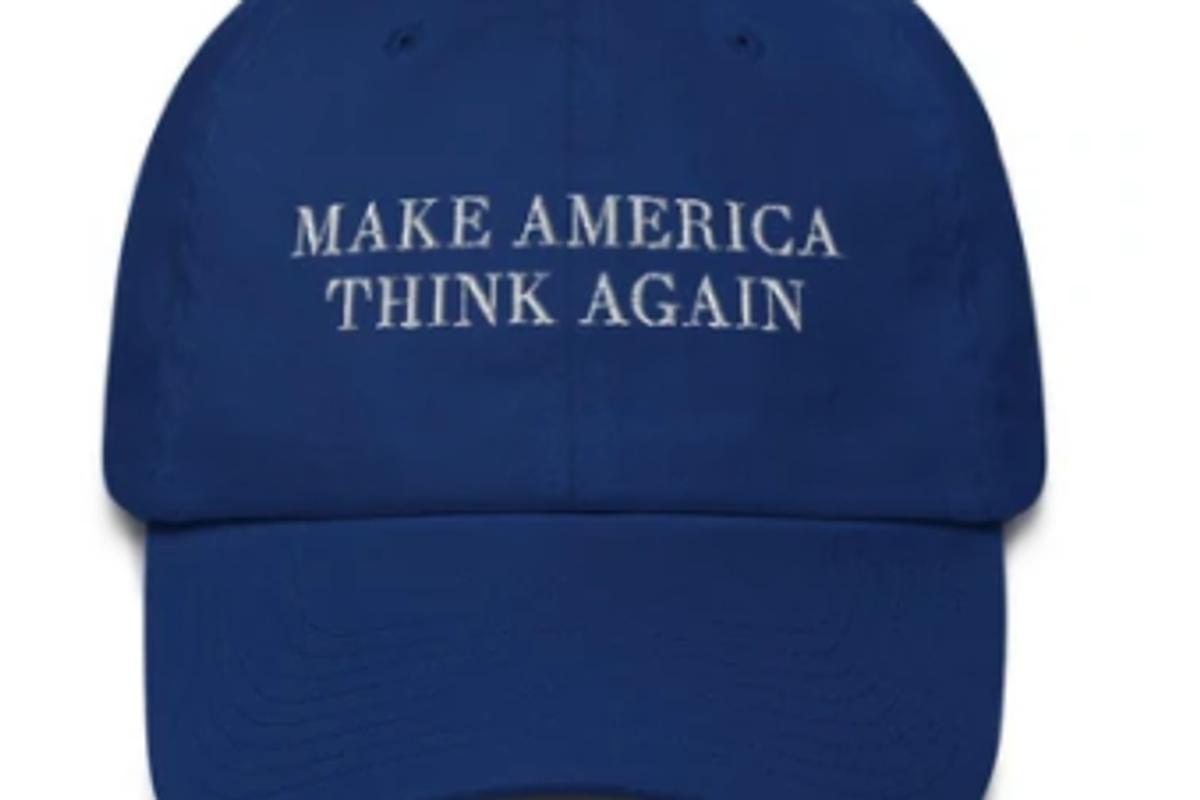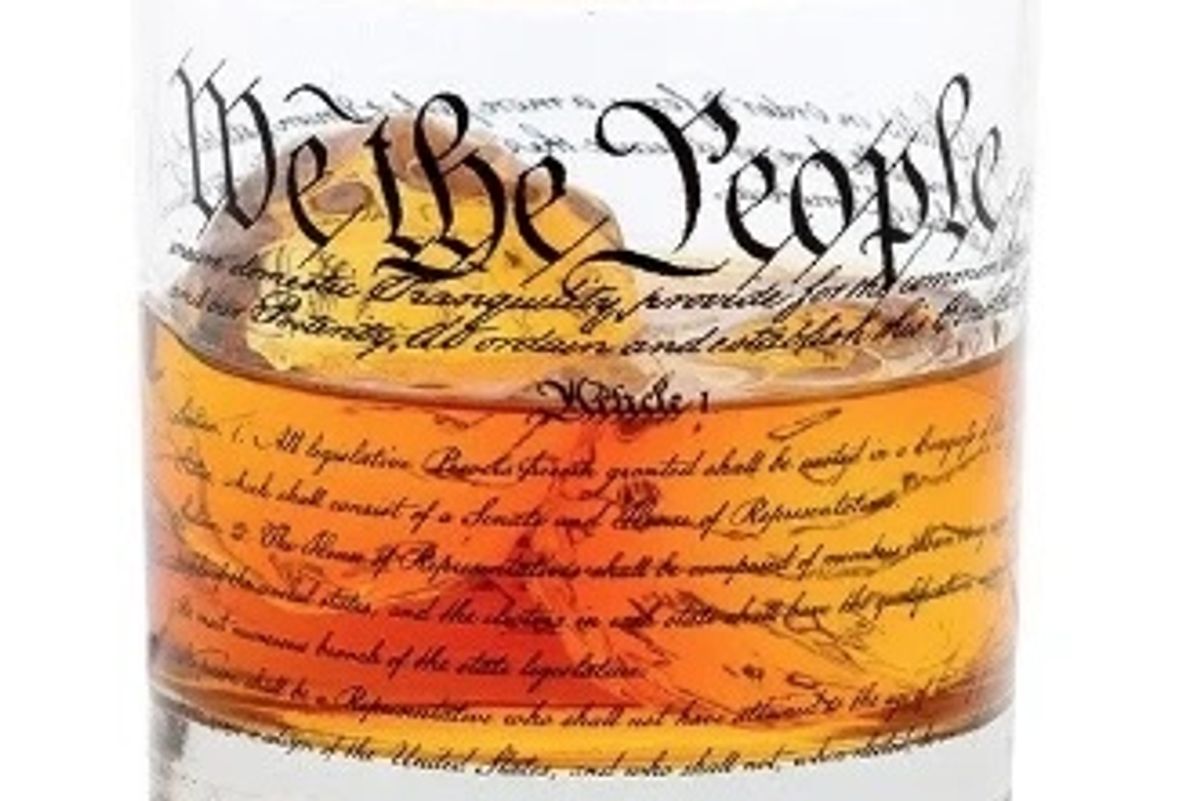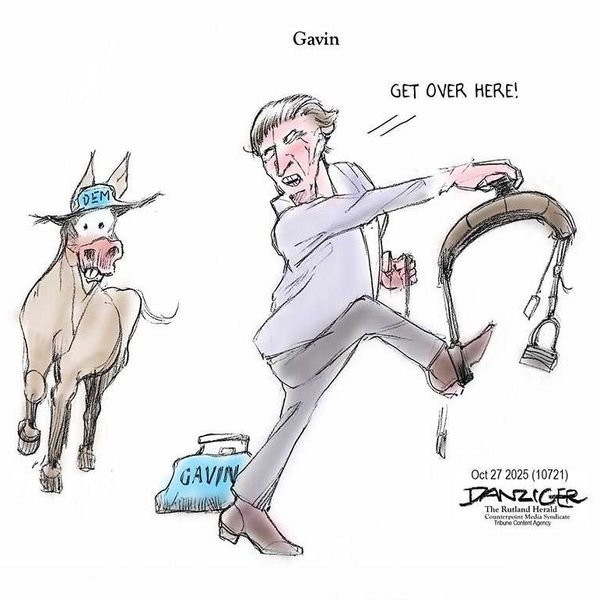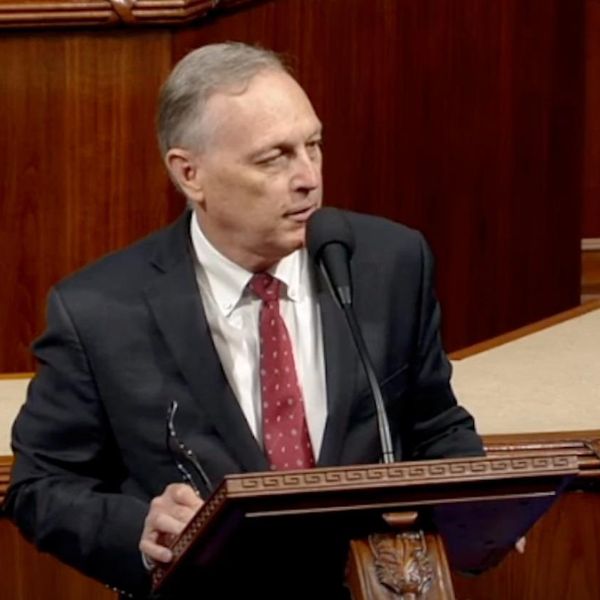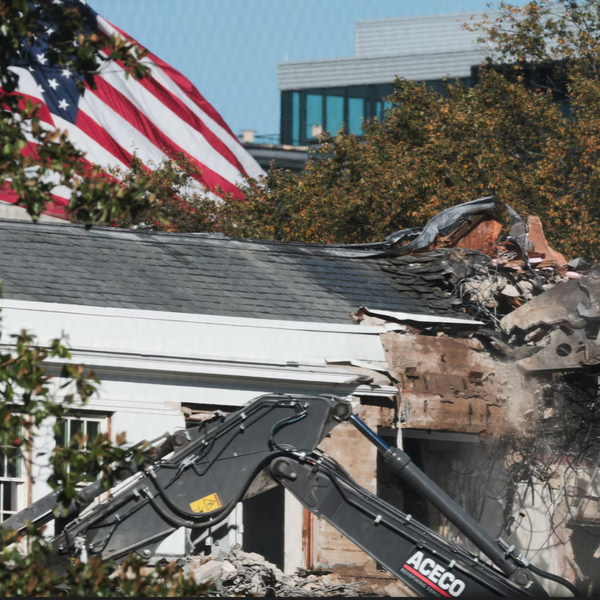The deals they discussed that day became central to Ukraine's complex relationship with the Trump administration, a relationship that culminated in December with the House vote to impeach President Donald Trump. Perry was a leading figure in the impeachment inquiry last fall. He was among the officials, known as the “three amigos," who ran a shadow foreign policy in Ukraine on Trump's behalf. Their aim, according to the findings of the impeachment inquiry in the House, was to embarrass Trump's main political rival, Joe Biden.
Alongside this political mission, Perry and his staff at the Energy Department worked to advance energy deals that were potentially worth billions of dollars to Perry's friends and political donors, a six-month investigation by reporters from Time, WNYC and ProPublica shows. Two of these deals seemed set to benefit Energy Transfer, the Texas company on whose board Perry served immediately before and after his stint in Washington. The biggest was worth an estimated $20 billion, according to U.S. and Ukrainian energy executives involved in negotiating them.
If this long-discussed deal succeeds, Perry himself could stand to benefit: In March, three months after leaving government, he owned Energy Transfer shares currently worth around $800,000, according to his most recent filing with the Securities and Exchange Commission.
Perry appears to have stayed on the right side of the law in pursuing the Ukraine ventures. Federal prosecutors in the Southern District of New York, or SDNY, questioned at least four people about the deals over the past year, according to five people who are familiar with the conversations and discussed them with our reporting team on the condition of anonymity. “As far back as last year, they were already interested in events that had taken place in Ukraine around Rick Perry," including allegations that Perry “was trying to get deals for his buddies," says one of the people who spoke to the Manhattan prosecutors. Perry is not a target of their investigation, according to two sources familiar with the probes.
But two ethics experts say Perry's efforts were violations of federal regulations. Administration officials are not allowed to participate in matters directly relating to companies on whose board they have recently served. Other experts say Perry and his aides may have broken a federal rule that prohibits officials from advocating for companies that have not been vetted by the Commerce Department. “Even if it skirts the criminal statute, it's still unethical," says Richard Painter, the top ethics lawyer in the White House of President George W. Bush, with whom we shared our findings.
Through a spokesman, Perry said he “never connected or facilitated discussions" between Energy Transfer and Ukraine's state energy firm in one of the deals we uncovered. The spokesman declined to comment on the other ventures Perry advanced while in government, including the $20 billion deal, or on the federal probe. In response to written questions for this article, Energy Transfer said, “We are not aware of any contact between Secretary Perry and Ukrainian officials on Energy Transfer's behalf."
Our investigation shows how the hunt for energy profits in Ukraine mixed money and politics at the highest levels of the Trump administration. Perry, in and out of office, advanced the business interests of his friends and political allies. The Ukrainians, in turn, sought to exploit Perry's agenda to advance their national interests. Now the success of Perry's deals may depend on the outcome of the November elections, according to Ukrainian officials involved in the negotiations. That means the presidential race will not only set the conduct of American foreign policy. It could also reshape billions of dollars' worth of business deals whose fate is closely tied to who is in power.
This account is based on interviews with more than two dozen current and former government officials and energy executives in the U.S. and Ukraine. Our reporting team has pursued leads and sources in Miami, Houston, New York, Kyiv and Washington, D.C., and reviewed hundreds of pages of legal documents, lobbying records, corporate emails and internal government communications. Many of the details the team uncovered have not previously been reported, and together they reveal another side of the events that set the stage for the impeachment of the U.S. president.
The Ukrainians were never naive in their overtures to the Trump team. They realized that Trump was a businessman. “We studied his psychological profile," says Konstantin Eliseev, who advised Ukraine's president on foreign policy when Trump took office in 2017. Their strategy, says Vitrenko, was “to lure or to seduce" the Trump administration by offering deals to its officials. “It was typical for Ukrainian politicians," says the energy negotiator. “They thought that if they could, to some extent, corrupt the U.S. government, or get them interested commercially or personally, it would help."
The Ukrainians desperately needed that help. Since 2014, they have been at war with Russia, and their country relies on U.S. support for its very survival. The first offer they dangled in that April 2017 meeting with Perry was indeed seductive: They were looking for a Western partner to take a 49% stake in the country's gas pipeline network. “It's a classic cash cow," says Oleksandr Kharchenko, one of the Ukrainian energy experts involved in trying to sell a stake in the company. Its annual profits, he says, are close to $2 billion.
The Ukrainians apparently got Perry's attention. From the outset, Perry's focus on Ukraine had puzzled his colleagues in government, who say that he took a personal interest in the country's affairs. Those affairs would normally fall under the purview of the State Department, not the Energy Department. But at the U.S. Embassy in Kyiv, officials felt that Perry's office had taken the lead on Ukraine policy. “Secretary Perry's staff was very aggressive in terms of promoting an agenda and excluding embassy personnel from meetings without giving explanations," David Holmes, a senior embassy official, said in a deposition to Congress during the impeachment inquiry last year.
Some of the voices driving that agenda were not members of the Energy Department but private businessmen, usually from Texas. The most visible was Michael Bleyzer, an old friend and political donor of Perry's. Known for his long mane of silver hair and a passion for scuba diving, Bleyzer was born in the Ukrainian city of Kharkiv and had immigrated to the U.S. in 1978. As Bleyzer explained in a series of emails and phone interviews, he shares an interest in photography with Perry, and they have taken trips together to shoot pictures in Colorado and Israel. “He considers me to be Mr. Ukraine," says Bleyzer. “Whenever he had questions about Ukraine, he would turn to me."
So did the Energy Department. In July 2017, three months after Perry's first Ukraine meeting, his staff invited Bleyzer to discuss Ukraine policy at their office in Washington, according to their internal emails. (The emails were released in February in response to a Freedom of Information Act request from American Oversight, a good-governance watchdog.) Over the following year, Bleyzer became a steady presence at the U.S. Embassy in Kyiv, often requesting meetings with U.S. Ambassador Marie “Masha" Yovanovitch. “Bleyzer came to the embassy once a month," says a person familiar with the meetings. The embassy staff were deeply concerned about the dual role Bleyzer appeared to be playing, both as a private businessman in search of oil and gas deals in Ukraine, and as an informal adviser to Perry. “We always tried to convince Masha not to take the meeting," says a person familiar with these visits. “But she said: 'I can't. He's Perry's buddy.'" (Yovanovitch declined to comment for this article.)
Bleyzer also had contacts at Energy Transfer, the company where Perry used to be a director. Its CEO, Kelcy Warren, gave $6 million to super PACs behind Perry's 2016 presidential race. In mid-June 2018, Bleyzer organized a trip to Kyiv for one of the company's executives. “I brought Energy Transfer to Ukraine," Bleyzer says of that trip. Their interest, he says, had to do with Ukraine's gas pipeline network, which the country had opened to foreign investment. It was the same deal the Ukrainians had pitched in Perry's office a year earlier, in April 2017. “Bleyzer told me, when he came to visit me, that this [company] was blessed by Perry," says one of the Ukrainian executives he met with. “The company was called Energy Transfer." (Bleyzer denies saying this and says he “never discussed Energy Transfer with Perry.")
The two sides did not make an obvious match. Energy Transfer has never done a major deal outside of North America. But the investment in Ukraine was enticing. The country's pipeline system is a reliable moneymaker, says Sergey Makogon, the head of the company that operates it. Russia pays more than a billion dollars a year to send its gas through Ukraine's pipelines to Europe. If Energy Transfer invested in that pipeline system, it could get a share of those profits. Vitrenko, who later led the negotiations with Energy Transfer, says they discussed an American investment of as much as $3 billion.
During his time in the Trump administration, Perry had no formal ties to Energy Transfer. He had sold his shares in the company after Trump nominated him to his Cabinet and stepped down from its board. At his confirmation hearing before the Senate in January 2017, Perry said under oath that he had no conflicts of interest in leading the U.S. Energy Department. But during his tenure, the Energy Department worked to advance a deal between Ukraine and Energy Transfer, according to three of the Ukrainian negotiators involved. “They support this deal 100%," says Kharchenko, one of the Ukrainian negotiators. The Energy Department says it did not encourage or advance these talks. The company says it never got enough information from the Ukrainians to determine the value of a potential investment.
But the pipeline system was hardly the biggest project Ukraine had to offer the Americans. Far more valuable was the prospect of selling American gas in Europe. At the end of 2015, while Perry was serving on the company's board, Energy Transfer received a federal permit to build a gas-export terminal in Lake Charles, in southern Louisiana. A few months later, the company signed a deal with Shell, the Dutch energy giant, to jointly develop the terminal at an estimated cost of about $11 billion.
This new export venture had left one big question unanswered: Where would Energy Transfer ship its gas? The global market for liquefied natural gas, or LNG, has plenty of suppliers, with shipments pouring out of Qatar, Australia and other major exporters. To make this project succeed, Energy Transfer needed a major buyer for its gas, ideally a buyer that would commit to a long-term supply deal. By 2019, an opportunity like that had emerged in Ukraine.
Perry wasn't coy about his agenda in Ukraine. When he first visited Kyiv in November 2018, he told a gathering of businessmen about a complex way to get American gas to Europe. It would involve shipping the gas to Poland on giant tankers, then stashing it underground in Ukraine before selling it back, westward, into the European Union. “The potential for Ukraine is stunning," Perry told the business roundtable. Soon after, officials at the Energy Department began to coin new terms for American LNG, calling it “freedom gas" and “molecules of freedom" as they sought to market it around the world.
While the Obama administration also sought to undercut Russian energy influence by exporting American LNG to Europe, some of Perry's colleagues in the Trump administration were surprised, and often frustrated, by the secretary's focus on selling gas. “He was a fierce advocate for LNG exports around the globe," said Tom Pyle, who headed the Trump transition team at the Department of Energy. “But he failed to restart the nuclear-waste program or initiate the much needed reforms at the agency, which are major disappointments," Pyle told the energy-focused publication E&E News.
Perry ultimately went straight to the top in Ukraine with his energy evangelism — and his favored disciples. In May 2019, Trump sent him to Kyiv to attend the inauguration of Ukraine's new president, Volodymyr Zelensky. During a meeting that day, Perry did something his handlers at the U.S. Embassy did not expect, despite their extensive planning for the talks. Perry handed a piece of paper to Zelensky and urged him to have a look. As he did so, Perry explained that the note contained a list of names of “people he trusts," according to Holmes, the U.S. diplomat, who was the official note taker at the event.
Among the names on the list was Bleyzer, Perry's old friend from Houston. The following month, June 2019, Bleyzer finally got the deal he wanted in Ukraine. In an auction of licenses to drill for oil and gas, the choicest license went to Bleyzer's company, which got the rights to develop some of Ukraine's biggest oil and gas fields over the next 50 years. The deal was first reported by The Associated Press in November. It is potentially worth billions of dollars.
There was another name on Perry's list, and it surprised the Ukrainians: Robert Bensh. A little-known oil and gas executive from Texas, Bensh had known Perry for only a few months by that point. Starting in the early 2000s, Bensh spent over a decade as one of the few American investors in Ukraine's oil and gas sector. His contacts in Kyiv included close associates of Ukraine's corrupt former President Viktor Yanukovych, who was ousted in a revolution in 2014. After that revolution, Bensh's business in Ukraine dried up, and he had returned to Houston. “I wanted nothing to do with Ukraine," Bensh told our reporting team in a series of interviews.
The Ukrainians soon understood at least one of the reasons for his return: Bensh was tied to Perry's dream of exporting American gas to Ukraine. Along with a group of investors from Louisiana, Bensh was promoting a company called Louisiana Natural Gas Exports Inc., better known among its founders as LNGE. Established in June 2018, the company had no deals or assets to its name. The man listed as its co-founder and director, Marsden Miller, is related to Bensh by marriage. In 1987, a jury in Louisiana found Miller guilty of corruption; his sentence was later overturned, and the government dropped the case against him after the U.S. Supreme Court narrowed the relevant statute in an unrelated case. LNGE owns no gas fields, no pipelines, no tankers and no export terminal. But its executives had connections in Ukraine and at the Energy Department. On July 10, 2019, those connections began to bear fruit.
That date marked a turning point in Ukraine's relations with the Trump administration. It was that afternoon in the White House that two officials from Kyiv were pressured to open investigations into Trump's political rivals. National Security Adviser John Bolton memorably called the day's events a “drug deal."
But the Ukrainians had another date with the Trump administration that evening. After the unsettling interaction at the White House, the two had a dinner meeting in a restaurant near the White House with two top Perry aides. Also there: Robert Bensh. As he sat down at the table, Oleksandr Danyliuk, then the national security adviser to Ukraine's president, remembers wondering why Bensh would be invited to a private dinner with senior government officials. “Smells like trouble," Danyliuk remembers thinking.
The deal Bensh and his partners had in mind was very similar to the one Perry had raised during his first trip to Kyiv eight months earlier. To them, at least, it seemed like a win all around. Shipping U.S. gas via Poland to Ukraine and then reselling it in the European Union would “make money for LNGE," Bensh explains. It could also make a lot of money for an American company like Energy Transfer that was looking for long-term buyers of gas from its export terminal. “To be able to build their terminals, they have to get orders," says Bensh. And of course the deal would also fit with Perry's agenda of selling American “freedom gas" to the world.
But from Ukraine's point of view, the plan had some critical flaws. One was the cost of transport: shipping American gas to Europe is expensive. And if Ukrainians agreed to buy that gas, they might get stuck paying a premium for many years to come. While prior governments in Kyiv had espoused the idea, the new administration there was skeptical. “It looks like it would be a big disaster," says Danyliuk, the national security adviser. In any case, during that dinner near the White House, he was too preoccupied with the day's “drug deal" to talk about any gas deals. Bensh could see it was the wrong time to push.
But Perry continued to promote his vision for American natural gas exports. That same month, July 2019, he was among the U.S. officials urging Trump to hold a phone call with Ukraine's new president. “The only reason I made the call was because Rick asked me to," the president later told a group of Republican lawmakers, according to a report in Axios that cited three of them. “Something about an LNG plant," Trump reportedly added. When the call took place on July 25, 2019, Trump urged the Ukrainian president to open investigations against the Biden family, famously asking Zelensky to “do us a favor." A rough transcript of the call would become Exhibit A of the impeachment inquiry.
The rough transcript makes no mention of Perry's gas agenda, but in the wake of the presidential shakedown, Perry pressed ahead. For much of that summer, his staff had been preparing to sign an international energy agreement during a summit in Warsaw. The aim of the summit, which began at the end of August 2019, was to pave the way for U.S. companies to ship gas to Ukraine via Poland. LNGE was angling to become one of those U.S. companies, and Perry's team had invited the company's chief executive to attend. The company had even written up a preliminary offer to Naftogaz, Ukraine's state energy firm.
Perry and his staff were urging Ukraine to sign it, according to three energy executives close to the ongoing negotiations. “They basically said: 'If you want us as friends, you've got to do this,'" one of them recalled. But the Ukrainians had bigger worries at the time. A few days before the summit, Politico had broken the news that the Trump administration had frozen a package of military aid to Ukraine later revealed to be worth $400 million. The Kyiv delegation was desperate to get the freeze lifted. “The biggest priority for me was the military aid," says Danyliuk.
So he left it to Naftogaz, the state energy company, to consider the offer of a deal with LNGE. “We looked them up," says Andrew Favorov, the Naftogaz executive who vetted the potential partner. A Google search led them to the past legal woes of Miller, LNGE's co-founder and director. That was a red flag for the Ukrainians. Moreover, says Favorov, “The company has no real assets." So Naftogaz advised its government not to pursue a gas deal with the Louisiana company.
Soon the deal faced another problem. Three weeks after the Warsaw summit, news broke that a whistle-blower had raised the alarm over Trump's pressure campaign in Ukraine, and the White House released the rough transcript of Trump's phone call with Zelensky. Amid all the public attention, the discussions of a U.S.-Ukraine gas deal went quiet, according to energy executives involved on both sides. With the impeachment investigation gaining steam, and his name emerging as a central player in the Ukraine saga, Perry announced in October that he would resign from the Energy Department at the end of the year.
The deal that Perry and his allies pursued for three years while he was in Washington didn't die when he stepped down and returned to Texas. After Trump's acquittal in the Senate on Feb. 5, Perry's allies inside and outside of government revived the massive U.S. gas-export deal he had been advancing, and pushed forward. In early March, representatives of LNGE met with Perry's successor as energy secretary, Dan Brouillette, a veteran of Louisiana politics. “He told us they were still 100% behind the deal," says one of the LNGE representatives who was at that meeting. The Energy Department denies it supported the deal. The meeting with LNGE “was purely introductory and informational," says Shaylyn Hynes, a spokesperson for the department.
After that meeting, things in Ukraine began to move fast. On March 11, the Zelensky government issued a decree appointing Bensh to the board of Naftogaz. Two days later, Ukraine's deputy energy minister announced that Ukraine had agreed to a major LNG deal with the Americans. The U.S. partner on the deal: Louisiana Natural Gas Exports.
The details were not disclosed, but the way the deal came about raised eyebrows on both sides of the Atlantic. In the U.S., critics pointed out that the Energy Department's apparent support for the deal appears to have violated federal rules that bar U.S. officials from advocating for U.S. companies that have not been vetted by the Commerce Department. LNGE never went through that vetting process, according to its executives. “The vetting process is there to identify conflicts of interest, previous improper dealings, anything that might reflect poorly on the U.S. government as a whole," says Theo LeCompte, who was a deputy chief of staff at the Commerce Department during Barack Obama's second term. Brouillette's office confirmed that LNGE had not been vetted and denied that the department had advocated for the company.
On the Ukrainian side, things were even more curious: Ukraine had not invited any competition for the deal. But even with the U.S. Energy Department's apparent blessing, the deal still wasn't a lock. Naftogaz executives were still refusing to partner with the Louisiana company. As an alternative partner on the Ukrainian side, Kyiv's Energy Ministry proposed an obscure state entity called MGU, which holds the shares of Ukraine's gas pipeline system.
But executives at that company also began to raise alarms, most notably the chairman of its supervisory board, Walter Boltz, a stately Austrian who had been brought in to help clean up the notoriously troubled Ukrainian gas industry. “Nobody wanted to tell the Americans, 'OK, this is a silly idea, stop it,'" says Boltz of the Louisiana deal. “You need to keep your friends happy." And the Ukrainians, he added, “might even be willing to pay a little bit more, I guess, to make Trump happy and keep the military aid flowing."
By the end of May, the Energy Ministry had fired the skeptic Boltz and announced another preliminary agreement with the Louisiana company. In a 20-page document, known as a memorandum of intent, the two sides spelled out the rough terms of the deal. Ukraine would agree to take shipments of gas from Louisiana for the next 20 years, according to a copy obtained by our reporting team. The volumes involved were substantial, amounting to 5.5 billion cubic meters per year, more than the annual gas consumption of Slovakia, an EU member that borders Ukraine. Executives at the Louisiana company say they projected the total sales from the deal to be around $20 billion, or roughly a billion dollars per year over two decades.
Still, the agreement left one crucial question unanswered: Where was the Louisiana company going to get all that gas? In June, LNGE turned to Energy Transfer. By that point, Perry had reclaimed his seat on the board of Energy Transfer and acquired its stock. Once the Louisiana executives had their preliminary deal with Ukraine, they went to Energy Transfer in search of a gas terminal, says Miller, the co-founder of LNGE. In a statement, Energy Transfer played down these discussions, saying they amounted to “one introductory conference call" that did not go any further, and Miller insists they did not talk about a partnership in Ukraine at the time. Other executives at LNGE say it was just one step toward completing the $20 billion deal. “First we had to finalize the deal in Ukraine," one of them says. “Then we get the gas."
It was at this final stage in the negotiations that the deal ran into major trouble. The Ukrainians began to stall. According to one official involved in Ukraine's deliberations about the deal, the reason for the delay was in large part political. By then, the COVID-19 pandemic was raging, and Trump's approval ratings had gone into sharp decline amid his chaotic handling of the outbreak. His chances of winning reelection began to look less and less likely.
For the Ukrainians, that changed the political equation behind the deal. “If Biden is elected, I'd say Biden's [team] would be pretty curious, to say the least," about how the deal with LNGE came together, says the official involved in Ukraine's deliberations. “In terms of relationships, that would be very damaging," adds the official. “Given the latest [poll] numbers, that's simply a stupid thing to do," he says.
Perry's allies found themselves getting the cold shoulder. Six months after the Zelensky government named Bensh to the board of Naftogaz, he has yet to officially take up that post. Bleyzer, Perry's friend from Texas, hasn't fared much better. Soon after he won the licenses to develop oil and gas fields in Ukraine in June 2019, Naftogaz challenged the awarding of those licenses in court. Ukraine's government, which owns 100% of Naftogaz, has declined to interfere in the litigation, which has prevented Bleyzer's oil and gas projects from getting off the ground.
As for Energy Transfer, during the heat of the impeachment investigation in October 2019, the Ukrainian Parliament decided that selling the country's gas pipelines wasn't such a great idea, and it voted to ban foreign ownership of those pipelines. The global collapse in gas prices during the COVID-19 pandemic, meanwhile, hit Energy Transfer hard. Its plans to build an LNG-export terminal in Louisiana took a blow at the end of March 2020, when Shell, its 50-50 partner in the project, decided to pull out, citing adverse market conditions.
Some of the executives in Louisiana are furious over the foot-dragging in Kyiv, and they put the blame on Naftogaz. In emails obtained by our reporting team, Miller, the director and co-founder of the Louisiana company, lashed out at Naftogaz for telling the government in Kyiv about Miller's overturned conviction on corruption charges. “This is the guy who went to the U.S. Attorney for the SDNY?" Miller wrote indignantly to his colleagues, referring to Andriy Kobolyev, the Naftogaz CEO. Indeed, the U.S. attorney's office for New York's Southern District had contacted Kobolyev in the fall of 2019, and he says he agreed to speak to its investigators. Those investigators have since questioned at least three other people about Perry's efforts to secure gas deals in Ukraine, according to the people familiar with what they told the investigators.
But earlier this year, prosecutors dropped that line of questioning, according to two people familiar with the questions they have posed since April. Noah Bookbinder, a former anti-corruption prosecutor with whom we shared our findings, says U.S. laws make prosecuting conflicts of interest difficult. “Criminal conflicts of interest are not charged all that frequently, because they can be hard to prove," he says. “It's got a relatively modest sentence. So often prosecutors will look at that and say, 'It's a lot of hard work to prove that, and it's not the biggest offense. So we're not going to take the time to go down that path.'"
Two years ago, some Democrats called for tighter restrictions on potential conflicts of interest, and they have pointed to Perry's relationship with Energy Transfer to justify new legislation. Sen. Elizabeth Warren introduced a bill in 2018, known as the Anti-Corruption and Public Integrity Act, that would ban corporations from hiring or paying former heads of agencies they have lobbied. In a letter to Perry and Energy Transfer last January, Warren urged Perry to resign from Energy Transfer's board. “This is exactly the kind of unethical, revolving-door corruption that has made Americans cynical and distrustful of the federal government," Warren wrote. In a curt reply, the company told Warren it was “fully aware of our legal and ethical standards related to Secretary Perry rejoining our board."
So is the $20 billion deal dead? Not necessarily. The Ukrainians appear to be waiting to see which way the political winds turn in November. Should Trump win another term, some Ukrainians assume Perry's deal might come back to life. “Wait three months, and then see what happens," says the official involved in the deliberations in Kyiv. “This is obvious political stuff. You don't have to be a genius to understand this logic."
But for all the Ukrainian efforts to seduce the Americans, some at least are disappointed with the entire process. They had hoped, on some level, that the U.S. agenda was still driven by a shared set of goals and values, like strengthening alliances and pushing back against the influence of Russia. But over time, says Vitrenko, the energy negotiator, it became clear that the overarching aims were simpler and, to the Ukrainians, more familiar. “It was about making deals," he says. And making money.
Contact Us
You can contact us via Signal, WhatsApp or voicemail at 347-244-2134. Here's more about how you can contact us securely.
You can always email us at tips@trumpincpodcast.org.
“Trump, Inc." is a production of WNYC Studios and ProPublica. Support our work by visiting donate.propublica.org or by becoming a supporting member of WNYC. Subscribe here or wherever you get your podcasts.
